Smart City Cybersecurity Solutions: AI, Digital Twins & Future Threats
Think your city is ready for the future? Think again. Smart city cybersecurity is no longer a luxury—it's a frontline defense. As AI-powered urban resilience and digital twin security reshape how cities operate, the real risk is falling behind. This post dives into real-world vulnerabilities, bold solutions, and global best practices—plus six actions leaders can take today. If you care about safe, efficient, and future-ready cities, you can't afford to skip this read.
SCIENTIFIC INSIGHTS INTO AI AND GEOSPATIAL TECHNOLOGIES
Scott Pezanowski
5/17/202510 min read
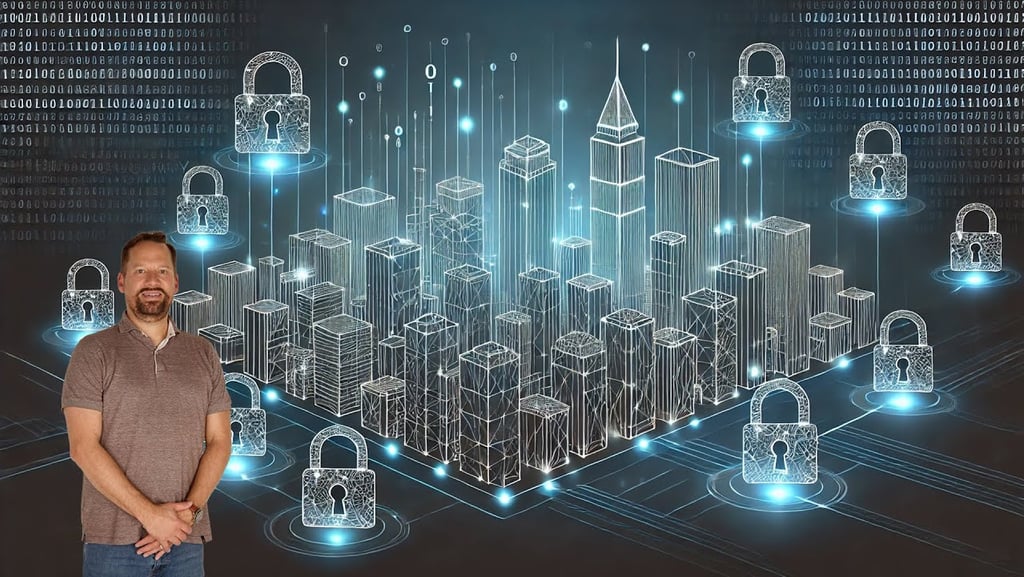

Imagine waking up in a city where every traffic light, hospital monitor, and water valve is connected to the internet—and a single compromised sensor could bring it all crashing down. This scenario isn’t a far-off dystopia. It’s today’s reality.
Last November, I participated in the "Cybersecurity in Smart Cities" panel at the International Conference on Smart Management and Innovation for Sustainable Cities (ICSMI-Kuwait), held at the Arab Open University in Kuwait. Each panelist brought a unique lens, including penetration testing, blockchain, health informatics, and geospatial AI. The hour flew by, fueled by audience questions and grounded in insightful responses.
But one panel is never enough. I’m expanding the conversation here to share insights from that day, connect them with my on-the-ground work across the region, and outline tangible ways cities can enhance their smart city cybersecurity foundations.
Why "Smart" Needs "Secure" from Day One
When cities upgrade infrastructure with sensors, AI models, and cloud-based control panels, their attack surface multiplies. You’re no longer securing a few government databases—you’re protecting entire systems where cyber threats can translate into real-world consequences.
For instance, legacy traffic signal controllers—some built before 2000 (Y2K)—now interface with 5G cameras and AI dashboards. Programmable logic controllers (PLCs) that manage water quality push real-time data to public apps. In these environments, even a single unsecured API or a forgotten device can trigger cascading failures that spill over from cyberspace into the physical world.
My philosophy is to apply core principles across projects—whether I’m modeling mosquito-control campaigns or consulting a Gulf bank on customer retention analytics.
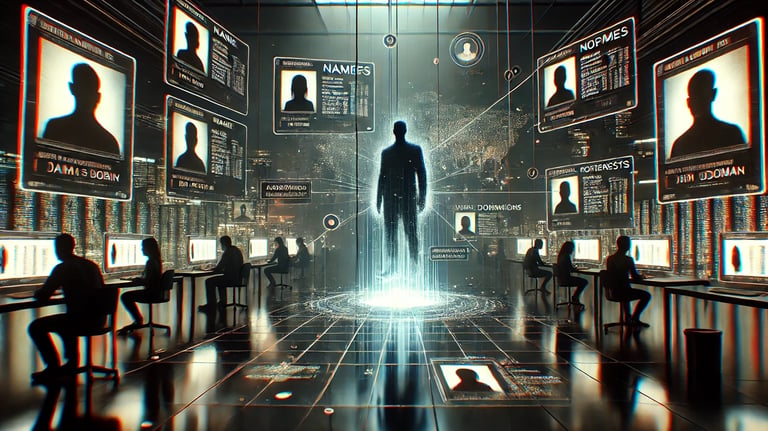

Every line of code, cable, or contract in a smart city program should answer:
What happens if this component is hijacked?
How quickly can we detect tampering?
How gracefully can we fail?
These are not theoretical questions—they are the difference between recovery and catastrophe.
Four Critical Challenges Cities Must Confront
During the panel, we discussed recurring pain points that can undermine even the most ambitious smart city initiatives:
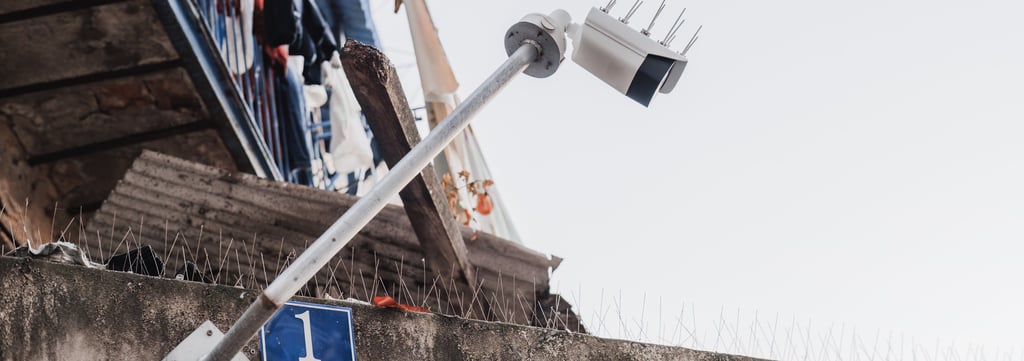

Outdated Hardware and Software
Many cities still rely on outdated infrastructure. For instance, as recently as 2019, the city of Baltimore in the United States was still operating critical municipal systems on legacy software when it was hit by a ransomware attack that disrupted real estate sales, utility billing, and emergency services for weeks. These aging systems often lack basic cybersecurity protections like routine patching, multi-factor authentication, or vendor support, making them easy targets for modern threats.
Vulnerable IoT Fleets
Cheap sensors are often shipped with default credentials and minimal security updates. Attackers no longer need to breach a data center—they can walk in through a WiFi-enabled trash can or traffic camera.
Fragile Data Pipelines
A misconfigured access control list (ACL) on a message broker can jeopardize multiple systems simultaneously, from hospital triage alerts to traffic control APIs.
Talent and Governance Gaps
Cybersecurity isn’t just technical. Without procurement policies that support timely patching and retention plans for skilled staff, even the best technology can fail.
We agreed on one antidote: adopting an ecosystem-level perspective. This means merging IT, OT, law, communications, and citizen engagement into a single, cohesive strategy.
Digital Twin Security and the Role of AI
One of the most exciting parts of the panel was the discussion around digital twin security workflows. Imagine a real-time, interactive replica of Kuwait City—a digital twin that continuously ingests traffic data, weather updates, CCTV feeds, and even cyber threat intelligence.
Here’s what happens when it detects something suspicious:
A substation controller is hit with unusual activity.
The digital twin flashes a warning.
It simulates service degradation.
It recommends rerouting electricity before a single apartment goes dark.
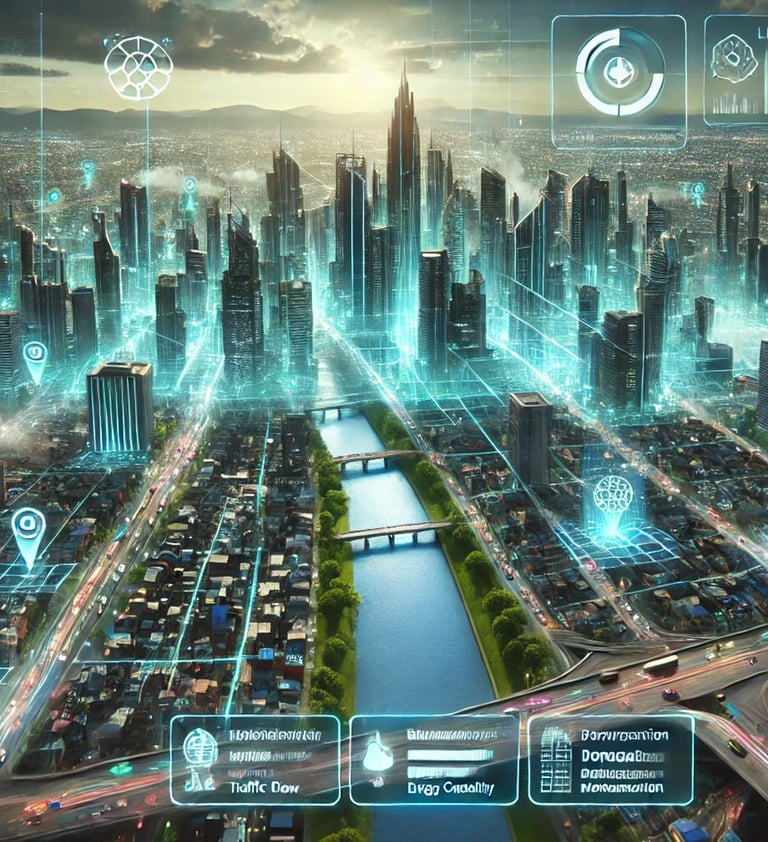

This scenario is AI-powered urban resilience in action. The digital twin is the body, and AI is the nervous system. Together they support:
Anomaly Detection: Self-supervised models flag unusual network behaviors in milliseconds.
Computer Vision: AI monitors tampering in roadside equipment using CCTV analysis.
Natural Language Queries: LLMs allow decision-makers to ask, “Show me all water sensors running firmware v1.2 in flood zones.” No coding is required.
Together, digital twins and AI transform smart city cybersecurity from reactive defense into real-time, predictive resilience, giving city leaders the tools to act before problems escalate.
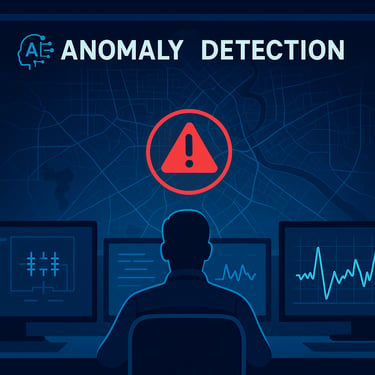
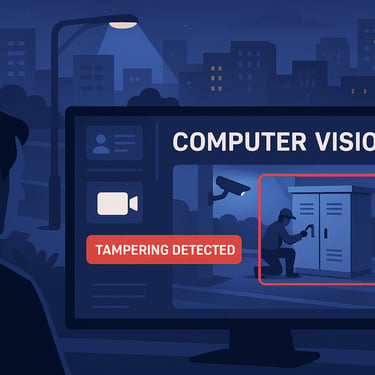
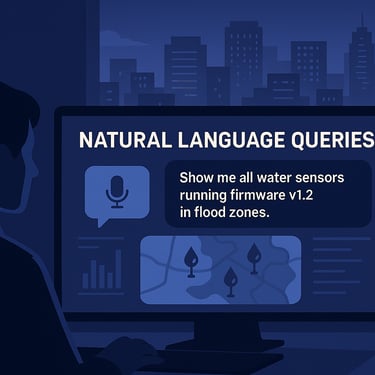
The Flip Side: Smarter Attackers and Data Integrity
Cyber vulnerabilities emerge as cities rely more on remote sensing and Earth observation data to guide planning. Satellite data helps cities map air pollution, heat islands, and green infrastructure—critical public health and resource management inputs.
Imagine a forged environmental feed signaling a phantom heat crisis. Emergency services could reallocate power unnecessarily, exposing actual high-risk neighborhoods. These risks are not hypothetical. They’re plausible attack vectors in a hyper-connected urban environment.
Cybersecurity isn’t just about firewalls—it’s about protecting data trust at every stage.
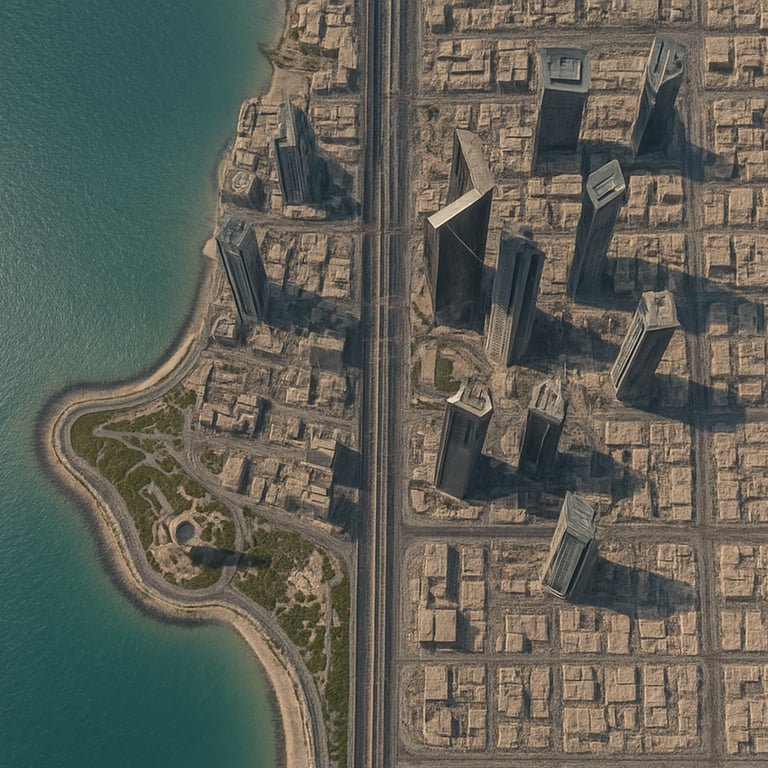

But what if that data is manipulated?
The Academic Advantage
People often ask how someone with a focus on geospatial AI and public health became so involved in cybersecurity. The answer is simple: these systems are increasingly inseparable.
I’ve seen it firsthand through my work with the World Health Organization, where I predict disease outbreaks using environmental data, and at Abdullah Al Salem University (AASU), where I advise on AI and data science infrastructure. Our predictive models can only be as good as the integrity of their inputs.
That’s why I advocate for interdisciplinary education. At AASU, cybersecurity is embedded into their curriculum and research, not as an afterthought, but as a core design principle of responsible innovation.




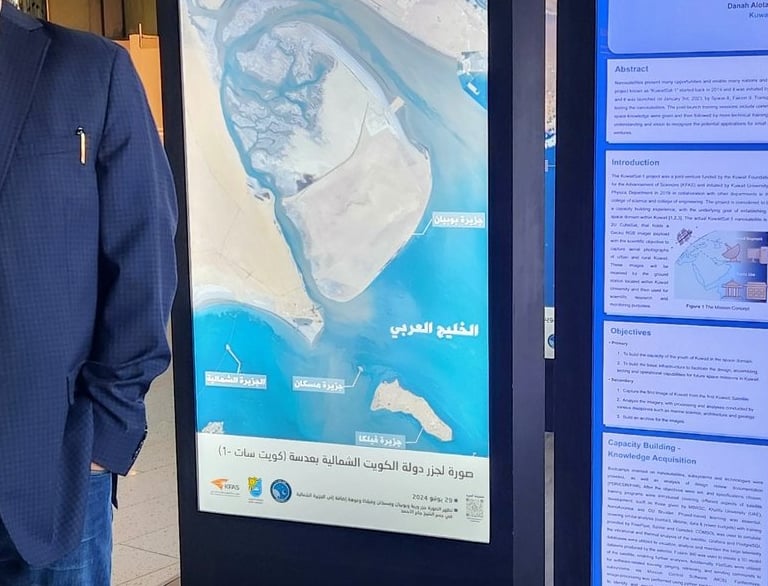



Global Models, Local Adaptation
Kuwait isn’t building secure smart cities in a vacuum. Around the world, governments are investing in digital infrastructure, cybersecurity innovation, and public-private partnerships that offer useful templates and cautionary lessons for us to learn from.
In the United States, the National Institute of Standards and Technology (NIST) partnered with the Department of Homeland Security to launch the Smart and Secure Cities and Communities Challenge (SC3). This program supports cities in prototyping secure deployments of smart technology, such as environmental sensors that monitor air quality. These pilots emphasize the importance of cross-sector collaboration, where local governments work hand-in-hand with universities, startups, and community organizations to manage risk and evaluate real-world outcomes. That collaborative, ecosystem-based model is precisely the approach Kuwait’s municipalities could adapt as they expand innovative services.
In Singapore, the government’s Smart Nation initiative emphasizes not just innovation but governance. Through the GovTech agency, Singapore introduced a central cybersecurity operations hub and released clear cybersecurity design principles for public digital services. What makes this model particularly relevant for Kuwait is its integration of national strategy with city-level execution, ensuring that efforts like digital twin systems or smart transport planning are secure by design from the start, not retrofitted after a breach.
Meanwhile, in the UAE, the city of Dubai has implemented a comprehensive digital twin of its entire urban infrastructure, integrating data from roads, utilities, buildings, and environmental systems. They use this to simulate everything from energy usage and flood risks to emergency response. Alongside this, Dubai has built strong cybersecurity standards through its Dubai Electronic Security Center (DESC), which provides frameworks for risk assessment and digital resilience across city departments. Kuwait could take a similar approach by ensuring that digital twin development, already underway in regional infrastructure projects, is closely tied to dedicated cyber governance bodies and tested with localized simulations.
From Barcelona’s DECODE project, which lets citizens help define the rules for smart city data use, to New York City’s IoT Guidelines, which mandate cybersecurity reviews before new city technologies are deployed, the global momentum is clear: smart city innovation is inseparable from smart city security.
Through my work at Abdullah Al Salem University and BrightWorld Labs, I help translate these global best practices into practical, localized strategies. That might involve helping a Kuwaiti university develop a cybersecurity curriculum inspired by NIST’s NICE framework, or assisting a city department in establishing procurement standards based on open, secure-by-default platforms.
The goal isn’t to copy and paste someone else’s playbook; it’s to adapt the best ideas from around the world into a framework that fits Kuwait’s priorities, systems, and pace of change. And with the right collaborations, we can leapfrog over avoidable mistakes and build more resilient systems from the ground up.
All places mentioned in this article


(Powered by Oncilla)
Civic Engagement as a Cybersecurity Asset
The most overlooked part of cybersecurity? People.
No security operations center (SOC) can match the situational awareness of an informed and engaged population. Across the world, we’re seeing how citizen science and community participation can harden smart cities:
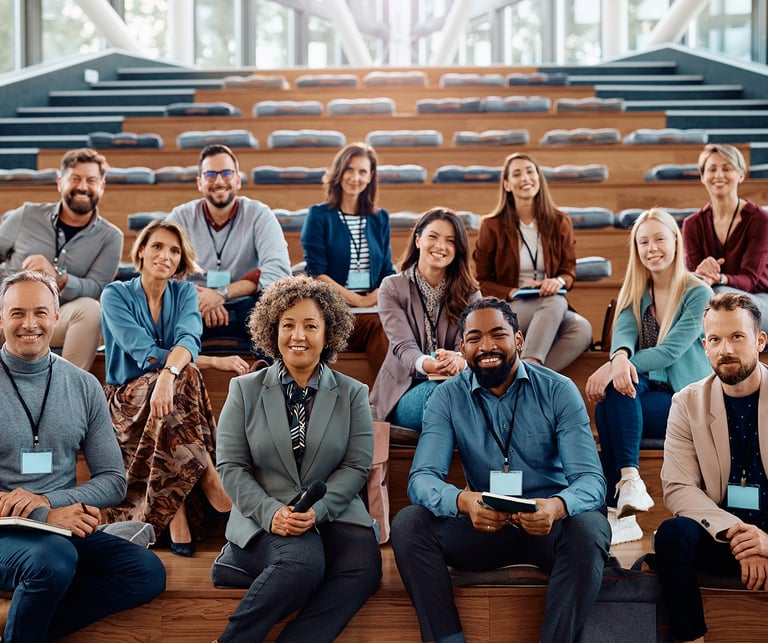

SGSecure: Singaporean citizens report anomalies directly via mobile apps.
Barcelona’s DECODE: Residents Co-Design Digital Policies to Build Trust and Reduce Surveillance Fears.
Taiwan’s Cofacts Project: This citizen-led fact-checking platform uses crowdsourcing and AI to combat misinformation.
Academic research backs this up: When citizens co-own data governance, privacy, and system security improve.
If we want smart cities, we must democratize resilience. That starts by making citizens co-protectors, not passive endpoints.
Project ideas I would love to tackle
1. Cyber-Physical Risk Mapping
Using satellite and environmental data, we can map urban zones where digital disruptions could trigger real-world harm, like flooded clinics or sensor-heavy intersections. Ideal for city planners and civil engineers.
2. Anomaly Detection Across Data Domains
AI models can detect subtle distortions in environmental and utility data caused by cyberattacks. We can build systems to monitor for these cross-signal drifts.
3. Geospatial Knowledge Graphs
Creating smart city cyber-asset graphs that link devices, risks, and services through space and time can enable more precise visualization and faster interventions.
4. Micro-Courses in Spatial Cybersecurity
Developing educational content to teach professionals how geography intersects with cyber threats would be perfect for universities and NGOs looking to upskill future talent.


Here are four initiatives I’d love to develop, each designed to reinforce smart city cybersecurity through geospatial intelligence and applied AI:
Let's connect if any of these resonate with your work or if you want to co-create new solutions. These aren’t experiments. They’re blueprints for resilient, equitable cities.
Six Practical Steps City Leaders Can Take Now
Building a secure smart city doesn’t require a degree in cybersecurity—it starts with common-sense actions that anyone in city leadership or planning can understand. These six steps are based on the real-world challenges I’ve seen working with academics, public health systems, and AI-driven analytics projects.
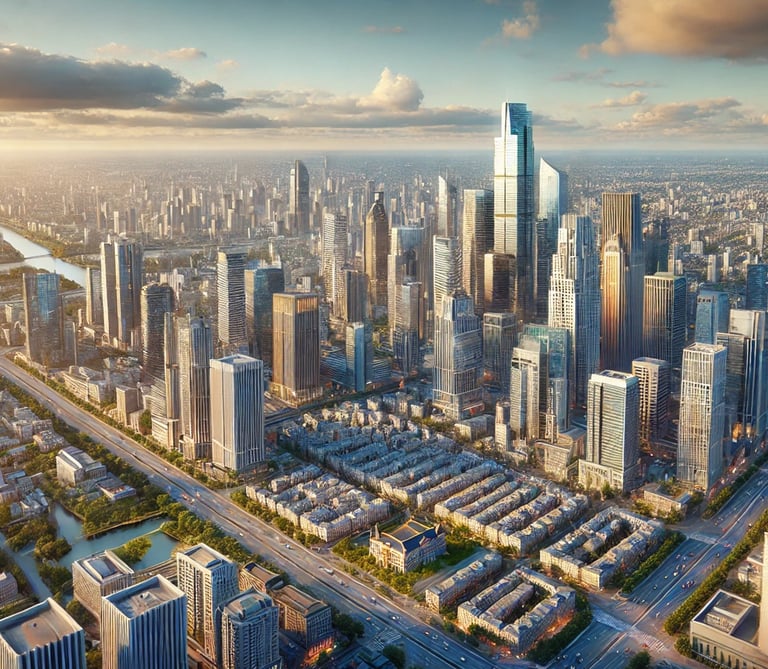

1 - Keep an up-to-date list of all your city’s connected devices and systems
You can’t protect what you don’t know exists. Ensure you have a comprehensive inventory—covering everything from smart traffic lights to environmental sensors—and review it regularly. Untracked equipment often becomes the weakest link.
2 - Ask technology vendors to be transparent about what’s inside their systems
When purchasing smart city technology, request a clear breakdown of the software components. These details help identify hidden risks early, such as outdated code or known vulnerabilities.
3 - Organize systems so that if one part is hacked, it won’t take down everything else.
Think of this as compartmentalizing a ship: if water floods one section, the vessel doesn’t sink. The same applies to digital systems—separate them so that one breach doesn’t trigger a chain reaction.
4. Periodically test your AI models and smart systems to ensure they function as intended.
Like a fire drill reveals problems in an emergency plan, running tests on your AI and automated tools can show blind spots, especially if attackers try to trick the system.
5 - Create a local cybersecurity response team, and let the public help
Cities benefit when citizens can easily report suspicious digital activity. A local response team with open channels for residents enables faster separation of real threats from noise.
6 - Invest in your staff’s digital skills—continuously
Cyber threats evolve fast. Train your staff not just once, but often. Ongoing learning prepares your team and makes public-sector roles more rewarding for skilled professionals.
Looking Ahead
McKinsey estimates IoT will generate $5.5–$12.6 trillion in value globally by 2030, and AI-driven workloads will require over $6.7 trillion in new data center investments (Internet of Things projected to generate up to $12.6 trillion by 2030, AI could drive $6.7 trillion investment in data centers, maybe, claims McKinsey). These numbers underscore why smart city cybersecurity is not optional—it’s essential.
When we combine digital twin security with AI-powered urban resilience, we shift from reactive defense to proactive, systems-based design. It’s not just about avoiding disaster—it’s about enabling safe, efficient, and inclusive cities for the long term.
I left the ICSMI stage feeling hopeful. Students and faculty pitched creative cybersecurity ideas, and government officials asked sharp questions.
Let’s Build Smarter, Safer Cities Together
Whether you’re a policymaker shaping future cities, a startup developer building AI tools, or a citizen trying to safeguard your neighborhood, you’re part of the solution.
Drop a comment with your biggest question about smart city cyber risks. Share this with a colleague who’s working on city innovation. And if you want to explore collaborations in data, AI, or resilience, reach out.
Together, we can build cities that are connected and secure by design.
Check out my YouTube video for a deeper dive into these ideas and real-world examples.

